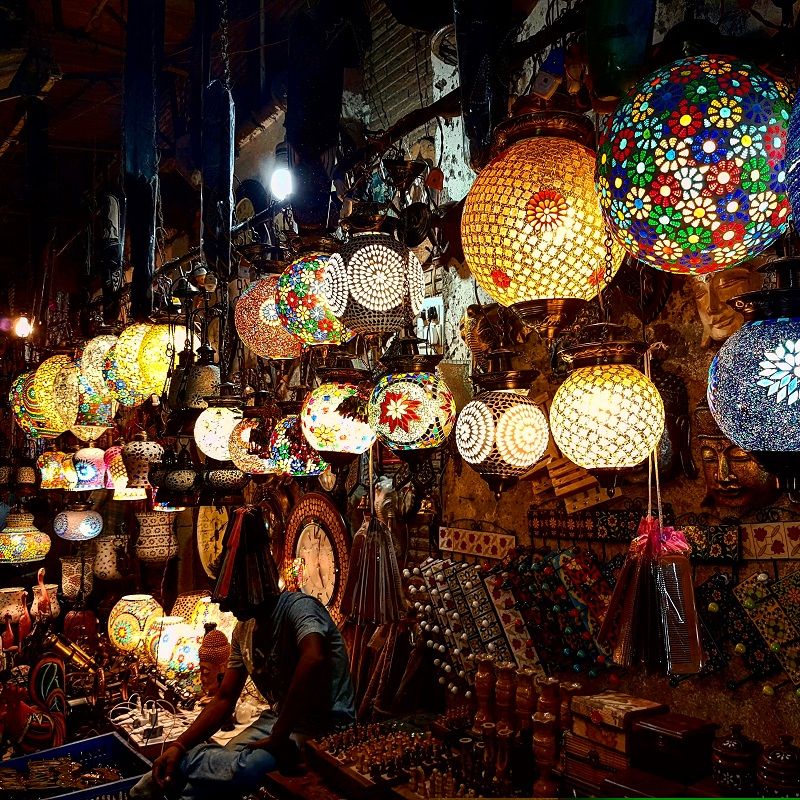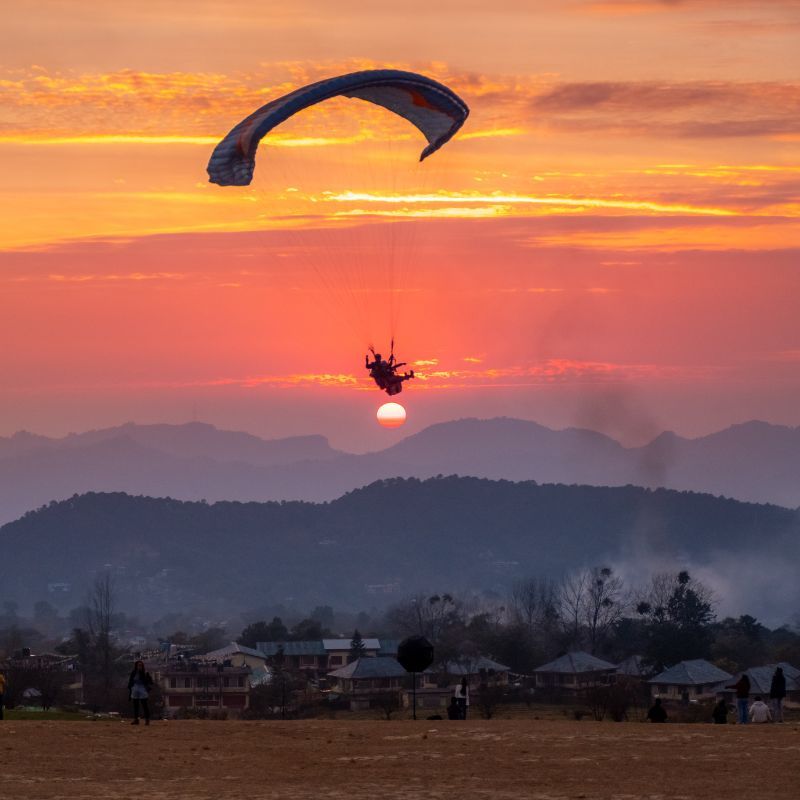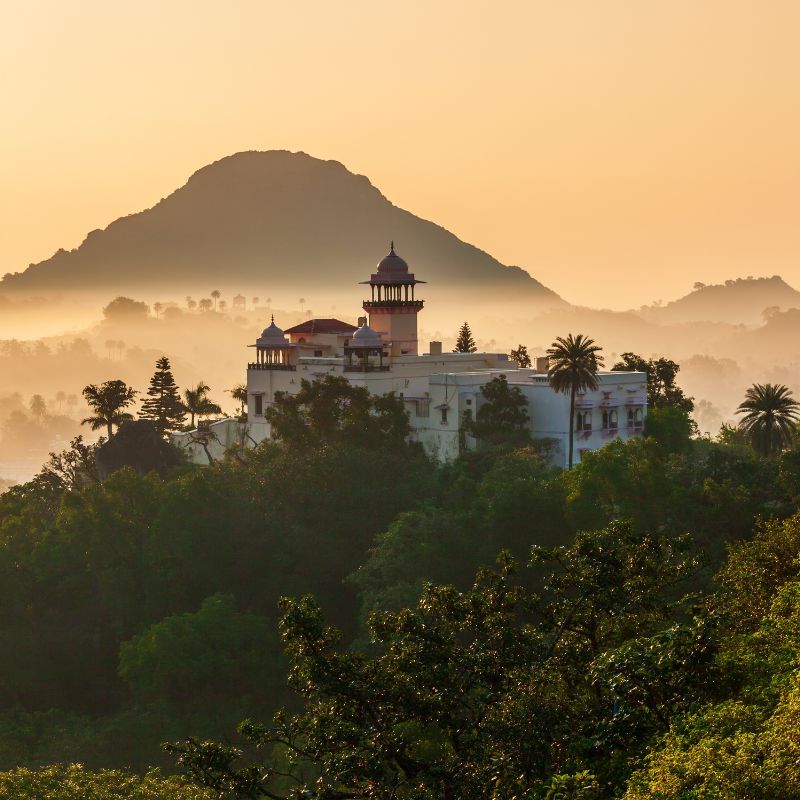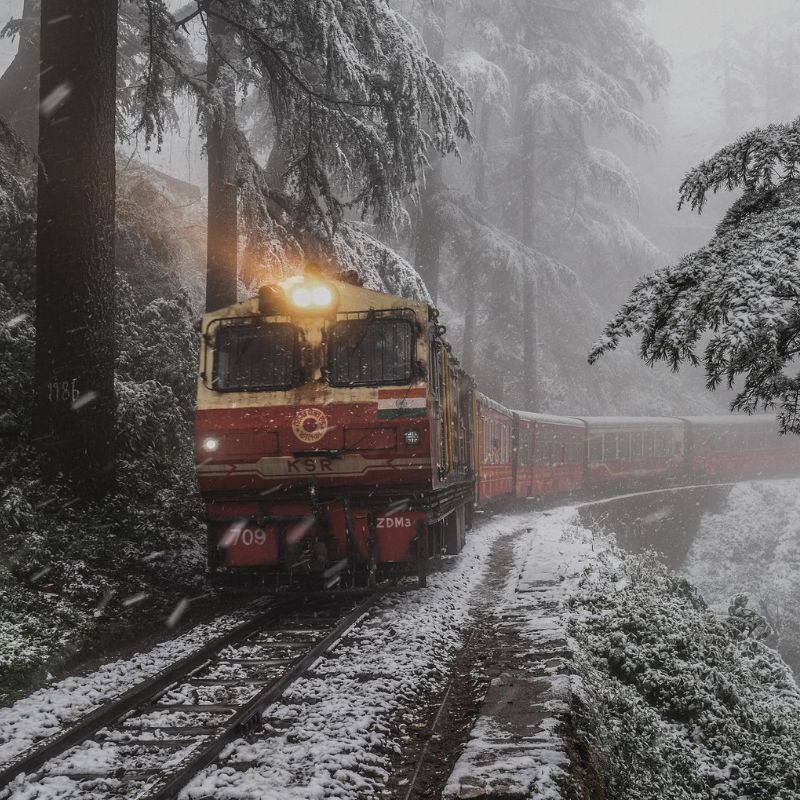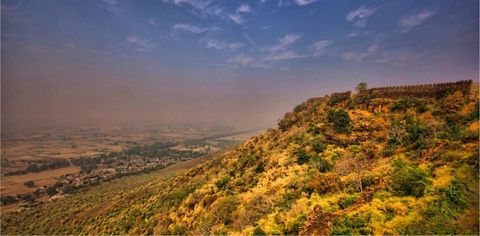
A naturalist and keen conservation tourism propagator unfolds the many facets of Kalinjar Fort, which might be Uttar Pradesh’s best kept secret and the next-stop-tourism destination for the state. By Hashim Tyabji
It isn’t often that I find myself sitting with my back towards 2,000 years of eventful history, captivated by a gorgeous panorama of vivid green fields sheltering among craggy, precipitous jungle-clad hills—and not another soul in sight! Behind me is one of the most extraordinary pieces of sculpture I have encountered in a lifetime of wandering across the known and lesser-known corners of the subcontinent. It is a bas-relief statue of a rampant many-armed Bhairava carved with such vitality, and such fearsome beauty that it seems barely held in check by the confines of the golden rock face. To its left is a smaller statue of Bhairavi, fluid and graceful in her somewhat provocative pose. On the other side is a trio of worshippers—wooden and lifeless in comparison.
Uncovering the secrets of Kalinjar Fort
In my solitude within the encroaching jungle, perched on the ledge of a cliff capped by vast and ancient ruined fortifications, I feel a bit like Indiana Jones. This is what travel should really be about—capturing the excitement of exploration, of discovery, and exclusive access to untrammelled landscapes and unknown treasures—arriving and departing with no more impact than as if you had never been.

I have been involved in the wildlife and adventure tourism business for the past
40 years. And depending on the mood of the day, count myself either extremely fortunate
in having seen so many of the subcontinent’s wild and remote corners before their inundation by unregulated mass tourism, or extremely unlucky in witnessing the ‘destruction by numbers’ of these very same places.
When people talk about ‘sustainable’ tourism, I am reminded of a graph representing the most effective climate change mitigating measures that individuals can adopt. The graph rises gradually from changing light bulbs to going car-free, and then suddenly shoots up to the effects of having one child less. This, in essence, reflects the demands on resources that each human habitually makes on earth. Tourism is a microcosm of the world at large, and even if India were to be miraculously transformed into a model of regulatory efficiency, the stark truth is that only a strict control of numbers will preserve both, the destination and the quality of the visitor experience, while keeping the tourism operations ‘sustainable’.
It is, in a sense, a consequence of such reflections that I find myself appreciatively contemplating the Bhairava masterpiece in its remote and jungli setting in the historic Kalinjar Fort. As a student of history, I had come across the name of the fort where the great Sher Shah had met his end, thus paving the way for the return of the Mughals. And in time, it came to be part of Raja Birbal’s jagir. I next encountered Kalinjar in an article chronicling the large-scale plunder of India’s historic treasures. According to it, Kalinjar—one of the most important forts established by the Chandelas of Khajuraho fame—had suffered some of the worst of this wholesale loot. The article was illustrated by several pictures, one of which has stayed with me—a jutting promontory of the Eastern Vindhyas, dominating an idyllic landscape of emerald fields and shaded orchards, capped by the once-mighty ruined walls approached by a paved pathway climbing steeply through scrub jungle to a gateway turbaned with wild figs, their aerial roots veiling its broken stone face. Twenty years ago, dacoits haunted these hills and ravines. This was the wild and remote India, this beguiling mix of ancient grandeur and encroaching jungle well off the beaten track—not just physically, but in public consciousness—that has always been the lodestone of my wanderings.
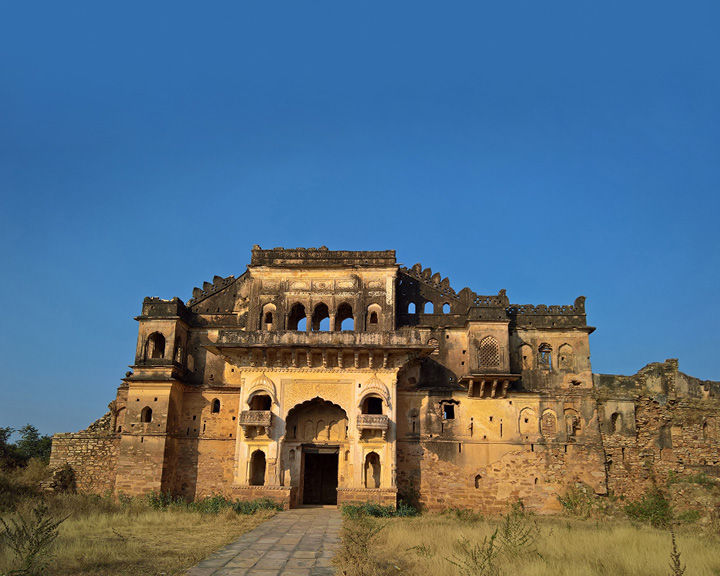
And so, it was that I found myself on this gloriously golden winter morning, the air scrubbed sparklingly clean by a band of high pressure, wandering enchanted through the impossibly romantic and tourist-free ruins of palaces and temples, mosques and green-coated water tanks shaded by vast badh trees strewn across the densely overgrown table top of the fort.
Located on the northern marches of the picturesque, fort-encrusted region known as Bundelkhand that lies south of the Betwa- Yamuna line, Kalinjar was a strategically important gateway to central India. In a geography that lends itself to hill forts, this was one of the oldest and certainly one of the most formidable. It was here, according to legend, that Mahadeva, having swallowed the poison to save the world after the manthan (churning) of the cosmic ocean, retired with his throat turned blue (Neelkantha) and triumphed over death or time (or decay—the philosophical interpretations of this legendary event are complex), that gave the fort its name—Kalinjar. Unsurprisingly, it is the Neelkantha Temple, dating in its present form to the Chandela period, that is the focus for the majority of visitors, most of whom are pilgrims or worshippers.
The temple is magnificent—both in its location on a partly excavated ledge below the north-western walls of the fort as in the profusion of exquisite Chandela art that embellishes it, including a graceful dancing Ganesha, and an anthropomorphic standing Nandi of a kind I haven’t seen anywhere else. The ancient eroded condition of Neelkantha within the Garbhagriha testifies to the antiquity of the place, vastly pre-dating the Chandelas with statues within the complex dating to the early Guptas. And then there is the immense, awe-inspiring statue of Kal Bhairava (or Gajantaka Shiva) that has to be seen to be believed. I suspect that I am not alone in finding the concept of Bhairava one of the most intellectually slippery to grapple with. But from more than any learned article or essay, I find a glimmering of understanding in this masterful piece of art that captures the essence of this most enigmatic manifestation of divine energy.
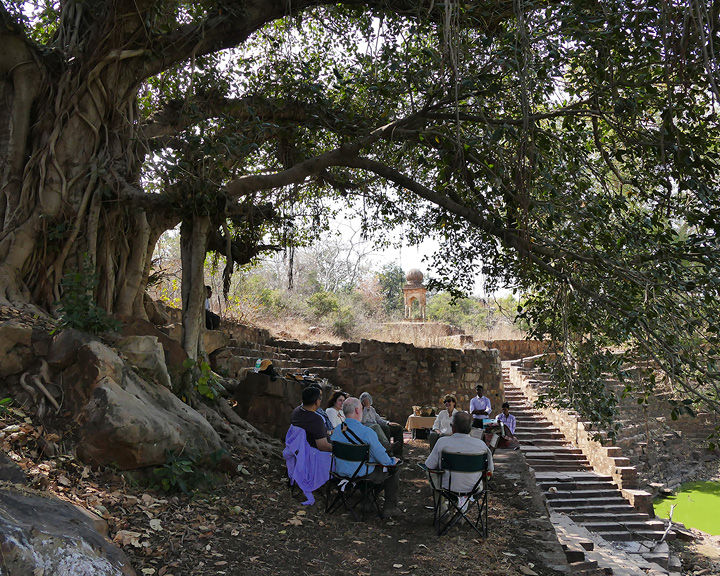
For the few tourists who do visit Kalinjar, the temple is the highlight, and for some, it
is the highlight of Bundelkhand itself. But for all its immense artistic beauty and historic significance, in my eyes its real value lies in the fact that it draws all the traffic away from the picturesque ruins of the main fort, where the real history resides. It is this deserted magnificence that has brought me to Kalinjar, and it is the silence that allows one the space to conjure up the romance of its turbulent past. From the eastern walls, I can look down on the hump of the hill where the British pounded the fort defences in 1812 and wonder if that was also the location of Sher Shah’s batteries where he met his end. Chhatrasal Bundela was given the jagir of Kalinjar (once held by Raja Birbal) by
the Emperor Bahadur Shah. Did his daughter Mastani ever play in the halls and courtyards
of these bat-infested palaces? From the southern walls, I look down on the huddle of mud and thatch huts that is the village of Saraiyan where Alha and Udal’s grandmother is supposed to hail from, and reflect on the irony that these two great heroes of Bundelkhand won their fame battling Prithviraj Chauhan of Delhi! Today, the government of UP is developing and promoting Kalinjar for tourism. May Mahadeva infuse its efforts with wisdom.
Getting There
The nearest airport is at Khajuraho (130 kilometres). Kalinjar can also be reached from New Delhi (620 kilometres) via Taj Express Highway.
Stay
Khajuraho is the nearest town to Kalinjar. The Lalit Temple View Khajuraho, Radisson Jass Hotel Khajuraho, and Syna Heritage Hotel are good options for a comfortable stay.
Related: Uttar Pradesh’s Legendary Bazaars For The Hoarder In You


